Refugees Flee to
and From Antwerp
News Weekly and Book Excerpts Giving More
Detailed Information :
'The War
Illustrated 2'
'At the
Front with Three Armies'
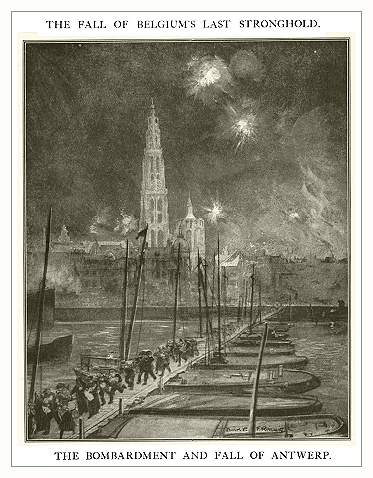
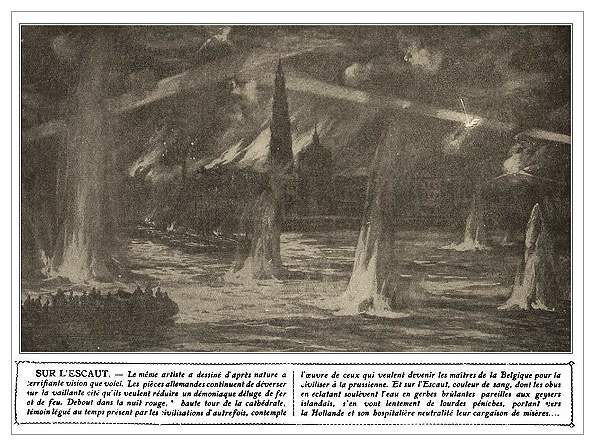
Two artists' renderings of a dramatic
night-time crossing of the bridge of boats under artillery
bombardment.
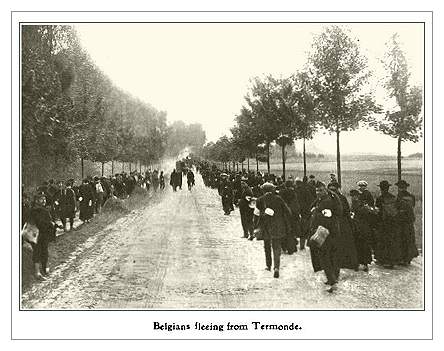
Before the fight for Antwerp started in late
September 1914, many Belgians had already fled their homes and
sought safety in the entrenched camp. Several hundred thousand
refugees entered the city, hoping to find protection from the
invading German army.

The newly arrived refugees needed food, shelter
and medical attention in an already overcrowded city.
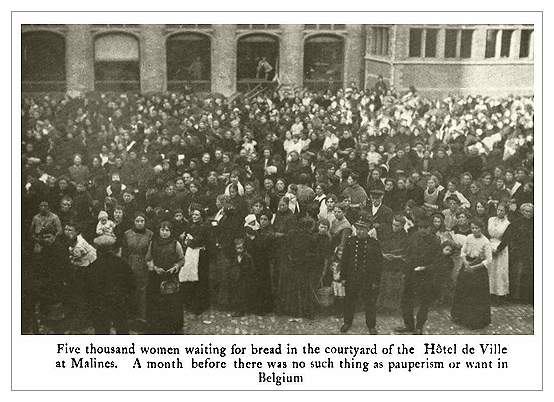
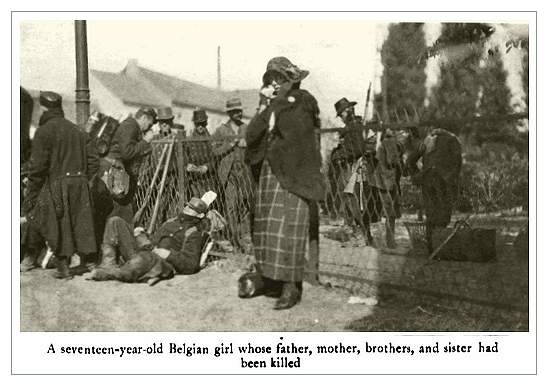
2 photos by Donald Thompson (see excerpts from 'Fighting in
Flanders')
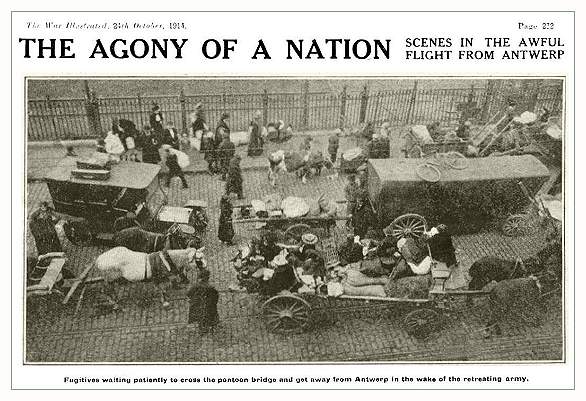
- When the news spread that the Belgian government and army
were going to abandon the city,
- panic broke out and all who could trie to flee Antwerp :
- they went on foot, by cart, by railroad and by boat
.
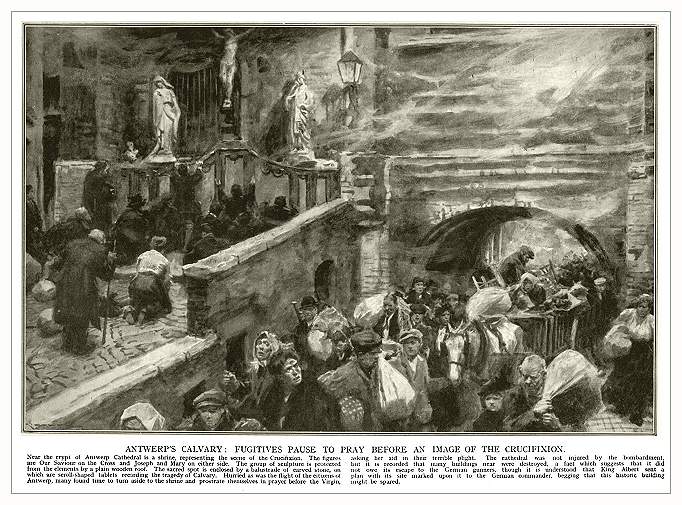
- An illustration showing refugees crowding through the
city en route to the pontoon bridge across the river.
- On the way they pass a shrine.
- This is a meticulously correctly rendered illustration of
an actual street in Antwerp,
- though the scene taken as a whole is somewhat dramatic in
scope.
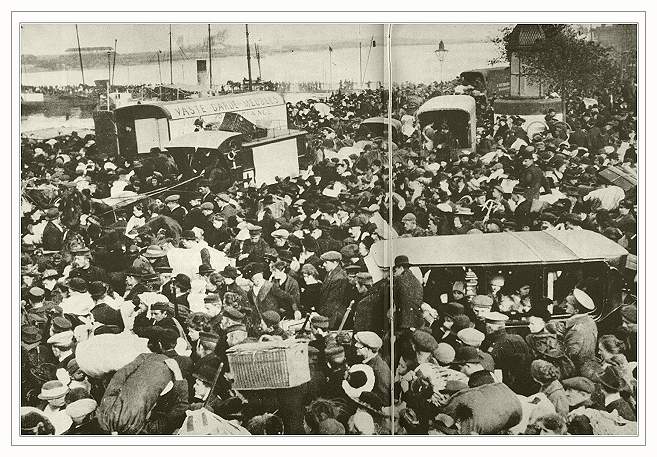
A mass of people trying to cross the river on
the bridge of boats (upper left background)
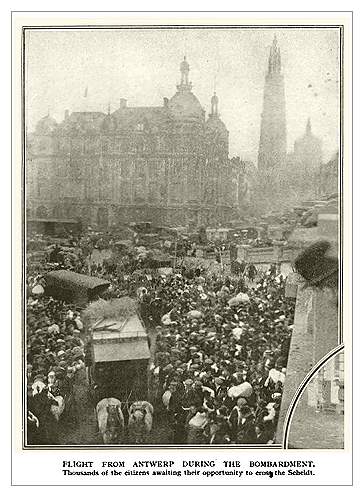
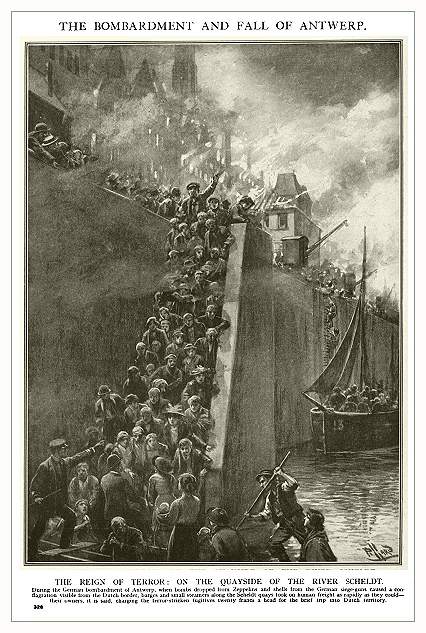
- A photo and an illustration of refugees on the quayside.
The illustration, though architecturally more or less
correct is once again over-dramatised, as no houses on
the quays were shelled during the fighting for Antwerp.
It is estimated that up 500 000 people fled the city in 2
days times, flooding the roads and railroads. Of this
number, about half fled by boat downstream into neutral
Dutch territory.
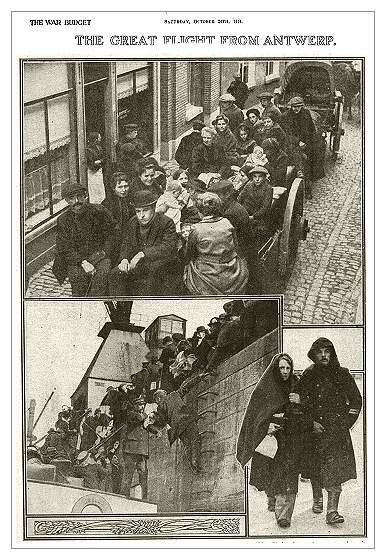
People used any means at hand to flee the
German army : those who could, boarded any kind of ship or boat
they could find and sailed downstream into Dutch territory. From
there, many continued their flight to Ostend or England.
(see the account in 'At the Front with
Three Armies')
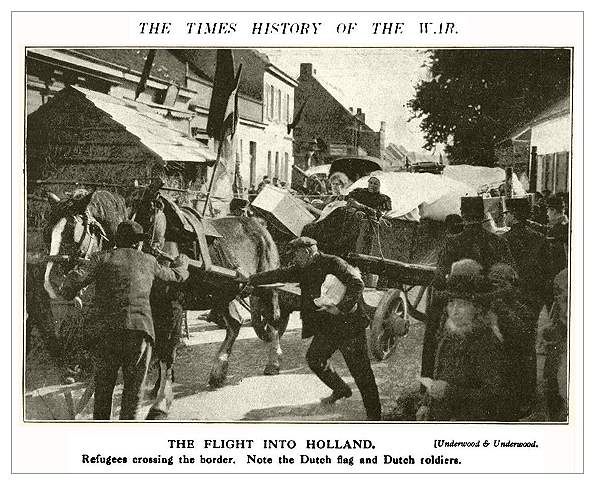
Many people fled northwards on foot or by cart
to Holland.
(see the account in 'The War Illustrated 2')
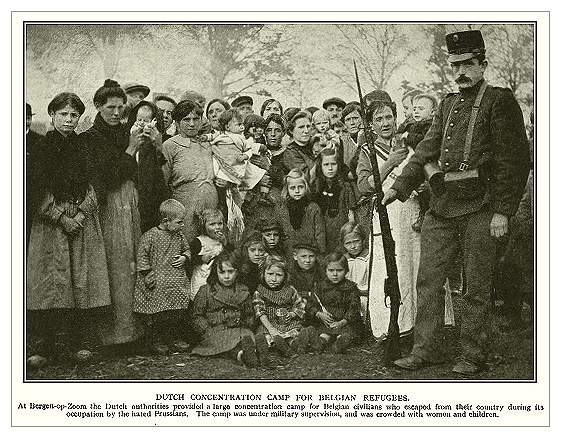
- A photo of Belgian refugees in a Dutch camp.
- Note that in 1914, the term 'concentration camp' did not
yet have the sinsiter connotation that it acquired in the
following World War.
*(see also the following link to Belgian
Refugees in the Netherlands)
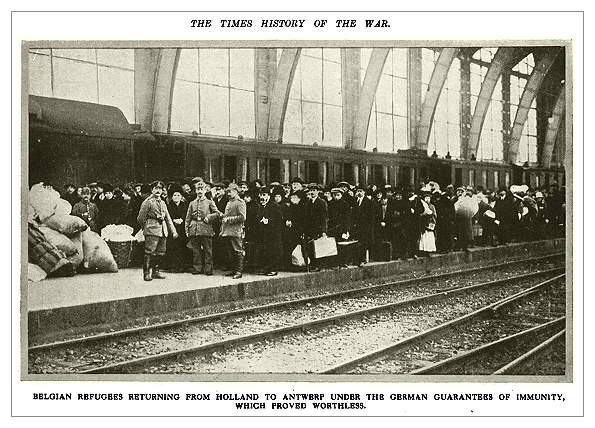
Returning back to Antwerp under German
occupation. Arrival of refugees in the Antwerp Central Station.

- Many other refugees fled to Great Britain.
- Here is a newspaper appeal for contributions towards a
Belgian Children Refugee's Fund.
________________
A Poem
from 'The Camp Magazine'
- published by interned soldiers of the Royal Naval Brigade
in Groningen Holland
- from Issue no. 1 - April 1915
- As weary once thro' Belgium I strode
- Along the ancient cobbled road,
- With tall dark trees on either side,
- Suddenly a house there I espied.
- Outside there stood an old, old, man,
- His clothes were bare, his features wan,
- Still he stood with concious pride,
- With no sign of fear, no wish to hide,
- While ever before him there passed along
- The refugees - a silent throng.
- I too, passed on my way,
- But he stood firm, come what may.
- Deep in thought I wondered why
- He preferred to stay, perhaps to die.
-
- Home - memories - and all those
- That make the lives of peasants and Kings,
- Better the bricks in a mould'ring cot,
- Than to go away from this sacred spot.
- Old man! Old man! A moral you taught,
- Be firm in trouble: have strength in thought.
-
- R. D. FIELDER.
-
-
-

















